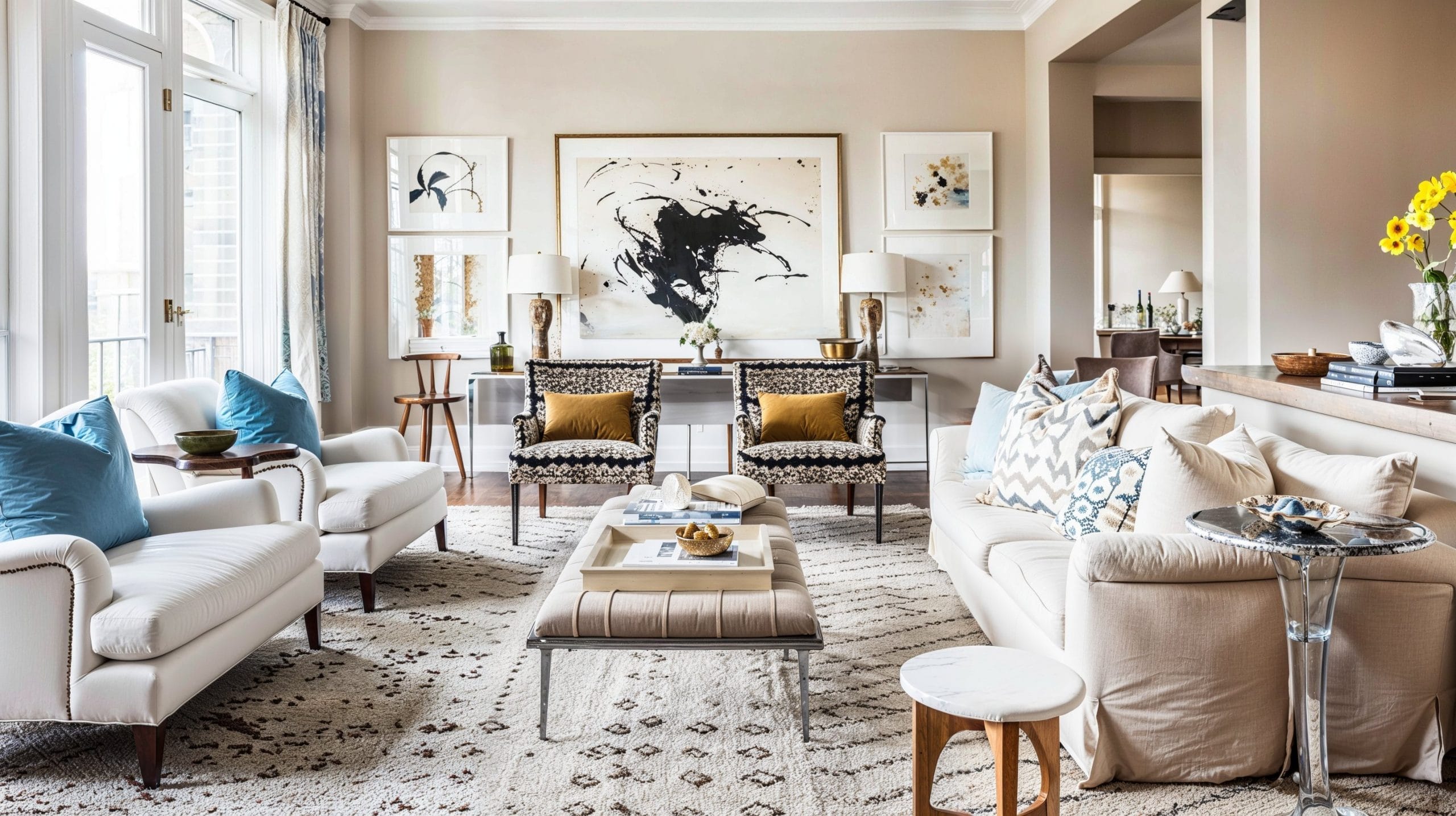Transform Your Home With Vital Principles of Inside Style and Visual Appeals
The art of transforming your home through the necessary principles of interior decoration and aesthetic appeal calls for a thoughtful technique that harmonizes shade, balance, and spatial recognition. By understanding the influence of color concept and the importance of appearance and patterns, one can produce rooms that are not only aesthetically attractive but likewise deeply personal. Achieving this stability involves even more than mere decor; it incorporates a calculated arrangement and a keen understanding of just how each element communicates within a room. As we check out these fundamental concepts, take into consideration how they could redefine your understanding of home and individual expression.
Comprehending Color Theory
Recognizing the principles of color theory permits developers to produce areas that resonate emotionally with passengers while satisfying useful needs. Each group plays a crucial role in establishing harmony within a room.
The mental impact of shades is profound; cozy tones such as reds and oranges evoke energy and heat, while great tones like blues and greens advertise calmness and tranquility. In addition, the usage of corresponding shades enhances aesthetic interest, developing striking contrasts that can elevate a space's appeal.
Neutral shades, on the various other hand, serve as a versatile background, allowing various other design aspects to shine. It is important to think about factors such as lights and the room's function when choosing a color scheme, as these can modify the understanding of colors throughout the day.
Eventually, a well-considered color pattern can transform a room, cultivating a feeling of convenience and style that aligns with the citizens' preferences. Proficiency of color concept is, as a result, a crucial ability for any indoor designer aiming to develop harmonious and inviting atmospheres.
Accomplishing Balance in Design
Just how can developers achieve a sense of balance in their spaces? Accomplishing balance in design is basic to producing unified insides.
Unbalanced equilibrium, on the other hand, relies upon differing components that still achieve a cohesive appearance. This technique enables more dynamic and casual setups, offering passion while preserving equilibrium. By thoroughly selecting differing sizes, colors, and appearances, designers can create an aesthetically engaging area that feels balanced yet energetic.
Radial equilibrium emphasizes a central prime focus with components radiating exterior. This style is frequently seen in round formats, where furniture and style produce a natural surround that attracts the eye inward.
Eventually, attaining balance calls for thoughtful consideration of scale, percentage, and the relationships in between elements. Architecture Firm. By masterfully applying these equilibrium concepts, designers can transform rooms right into environments that feel both visually pleasing and functionally unified, enhancing the total experience for residents
Relevance of Spatial Awareness

A keen sense of spatial awareness enables designers to determine focal factors within an area, leading the viewer's interest to essential functions while preserving a general sense of unity. It also aids in the calculated positioning of illumination, which can dramatically influence the assumption of area and mood. Moreover, comprehending spatial connections allows the designer to satisfy the details demands of citizens, ensuring that each location serves its desired objective without jeopardizing aesthetics.
Inevitably, spatial understanding is important for making the most of the possibility of any indoor room. By meticulously considering the interplay in between dimensions, design, and function, developers can produce environments that not just meet functional requirements yet additionally evoke he has a good point a feeling of convenience and charm, boosting the overall living experience.
Including Texture and Patterns
Embracing a diverse series of textures and patterns can dramatically improve the aesthetic and responsive charm of an interior room. The critical use various products-- such as timber, metal, material, and rock-- creates deepness and interest, making a space really feel extra inviting and dynamic. As an example, integrating smooth surface areas with harsh textures can establish an equilibrium that draws the eye and engages the senses.
When incorporating patterns, take into consideration both range and repetition. Large patterns can serve as centerpieces, while smaller, refined layouts can complement other aspects without overwhelming the area. Layering patterns, such as pairing flower pillows with striped throws, adds complexity and a sense of consistency if performed thoughtfully.
It is also crucial to preserve a cohesive shade combination, making sure that structures and patterns collaborate as opposed to complete for interest. By picking a few key appearances and patterns, you can produce a linked aesthetic that mirrors your personal design while boosting the overall ambiance of the area. Ultimately, the mindful consolidation of these elements can change a mundane area into an advanced environment rich with character and heat.
Personalizing Your Room
Creating an area that mirrors your character is essential to accomplishing a truly inviting setting. Customization in interior decoration permits you to instill your unique style and passions into your home, transforming it from a plain shelter into a haven that talks to who you are. Begin by selecting a shade scheme that resonates with your feelings-- bold colors can energize, while soft tones provide tranquility.
Incorporate art work and style that show your enthusiasms, whether it be travel, nature, or abstract principles. Presenting individual collections, such as books, photos, or keepsakes, can stimulate cherished memories and create centerpieces within a room. Additionally, think about tailoring useful items, like upholstered furnishings, to straighten with your visual preferences.

Verdict
To conclude, the improvement of a home through the vital principles Resources of interior decoration and aesthetic appeal necessitates a thorough understanding of color concept, balance, spatial recognition, appearance, and customization. Each element adds considerably to developing a harmonious and practical living setting - miami interior design. By thoughtfully incorporating these principles, people can boost the visual appeal and psychological resonance of their areas, inevitably promoting a home that mirrors distinct identifications while giving view publisher site comfort and functionality